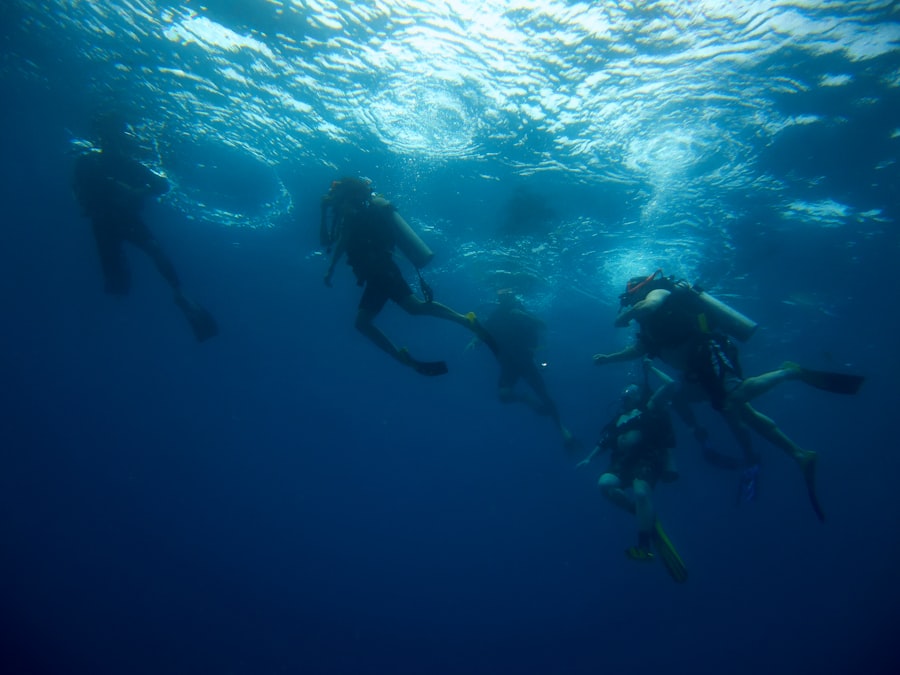Download links
How to install Exploring the Shallow Sea: 8k8 Shallow Sea Diving APK?
1. Tap the downloaded Exploring the Shallow Sea: 8k8 Shallow Sea Diving APK file.
2. Touch install.
3. Follow the steps on the screen.
Description
Shallow sea diving offers a unique and enchanting experience that captivates both novice and seasoned divers alike. The allure of exploring underwater ecosystems just beneath the surface is irresistible, as divers are greeted by vibrant coral reefs, swaying seagrass beds, and a plethora of marine life. Unlike deeper dives, shallow sea diving allows for extended exploration without the complications of nitrogen narcosis or the need for extensive decompression stops.
This accessibility makes it an ideal choice for those who wish to immerse themselves in the underwater world without the pressures associated with deeper dives. The clarity of shallow waters often enhances the visual experience, allowing divers to appreciate the intricate details of marine flora and fauna. Sunlight penetrates these shallower depths more effectively, illuminating the underwater landscape and creating a kaleidoscope of colors.
The gentle sway of corals and the darting movements of small fish create a dynamic environment that feels alive and vibrant. Moreover, shallow sea diving often takes place in locations that are rich in biodiversity, making each dive a new adventure filled with discoveries. The combination of stunning visuals and the thrill of exploration makes shallow sea diving a truly magical experience.
Key Takeaways
- Shallow sea diving offers breathtaking views of colorful marine life and vibrant coral reefs
- Proper equipment and safety precautions, such as a buoyancy control device and dive flag, are essential for shallow sea diving
- Shallow sea diving allows for up-close encounters with a variety of marine life, including sea turtles, rays, and tropical fish
- Some of the top shallow sea diving destinations around the world include the Great Barrier Reef, the Red Sea, and the Maldives
- Conservation efforts, such as reef cleanups and marine protected areas, are crucial for preserving the delicate ecosystems of the shallow sea
- Beginners should start with a certified diving course, practice good buoyancy control, and always respect the marine environment
Equipment and Safety Precautions for Shallow Sea Diving
Essential Equipment for Shallow Sea Diving
A well-fitted wetsuit or drysuit is crucial, as it provides thermal protection against cooler water temperatures and safeguards against potential scrapes from sharp corals or rocks. Additionally, divers should equip themselves with a reliable mask and snorkel, which allow for clear vision and easy breathing while observing marine life at the surface.
Importance of Fins and Safety Precautions
Fins are also important, as they enable efficient movement through the water, conserving energy during exploration. Safety precautions cannot be overlooked when engaging in shallow sea diving. Even in relatively safe environments, divers should always dive with a buddy to ensure mutual safety and assistance in case of emergencies.
Pre-Dive Safety Check and Communication
It is advisable to conduct a thorough pre-dive safety check, which includes verifying that all equipment is functioning properly and that both divers are familiar with their dive plan. Additionally, divers should be aware of their surroundings, including currents and weather conditions, as these factors can change rapidly. Establishing clear communication signals underwater can also enhance safety, allowing divers to convey important messages without relying on verbal communication.
Marine Life Encounters in the Shallow Sea

One of the most exhilarating aspects of shallow sea diving is the opportunity to encounter a diverse array of marine life. The shallow waters are often teeming with species that thrive in these environments, from colorful reef fish to majestic sea turtles gliding gracefully through the water. Coral reefs serve as bustling cities for marine organisms, providing shelter and sustenance for countless species.
Divers may find themselves surrounded by schools of small fish, such as damselfish or clownfish, darting in and out of coral formations, creating a mesmerizing display of movement and color. In addition to fish, shallow sea diving offers encounters with other fascinating marine creatures. Sea stars, sea urchins, and various mollusks can often be spotted nestled among rocks or corals.
For those lucky enough to dive in certain regions, encounters with larger species such as rays or even gentle nurse sharks can occur. These interactions provide a unique opportunity to observe marine life in its natural habitat, fostering a deeper appreciation for the delicate balance of underwater ecosystems. Each dive can yield new surprises, making every excursion into the shallow sea an adventure filled with wonder.
Top Shallow Sea Diving Destinations Around the World
| Destination | Country | Depth | Visibility |
|---|---|---|---|
| Great Barrier Reef | Australia | 5-25 meters | 20-30 meters |
| Red Sea | Egypt | 5-40 meters | 20-30 meters |
| Cozumel | Mexico | 12-30 meters | 20-30 meters |
| Maldives | Maldives | 5-30 meters | 20-40 meters |
Several locations around the globe are renowned for their exceptional shallow sea diving experiences. One such destination is the Great Barrier Reef in Australia, where divers can explore vibrant coral gardens teeming with life just a few meters below the surface. The reef’s diverse ecosystems offer an abundance of marine species, making it a prime location for both snorkeling and diving.
The crystal-clear waters provide excellent visibility, allowing divers to fully appreciate the stunning underwater scenery. Another remarkable destination is the Caribbean Sea, particularly around islands like Bonaire and Cozumel. These areas are famous for their pristine reefs and abundant marine life.
Bonaire’s marine park is a protected area that boasts some of the best shallow diving spots in the world, where divers can encounter everything from colorful parrotfish to elusive seahorses. Cozumel’s Palancar Reef offers similar experiences, with its breathtaking coral formations and vibrant fish populations. The warm waters and rich biodiversity make these Caribbean locations ideal for divers seeking unforgettable shallow sea adventures.
Environmental Impact and Conservation Efforts in the Shallow Sea
As shallow sea diving becomes increasingly popular, it is essential to consider its environmental impact on delicate marine ecosystems. The rise in tourism can lead to overfishing, habitat destruction, and pollution if not managed responsibly. Coral reefs, in particular, are vulnerable to damage from careless divers who may inadvertently break corals or disturb marine life while exploring.
In response to these challenges, various conservation efforts have been initiated worldwide to protect shallow marine environments.
These MPAs serve as sanctuaries for marine life, allowing ecosystems to recover and thrive. Furthermore, organizations dedicated to marine conservation often engage in educational programs aimed at raising awareness among divers about responsible diving practices. By promoting sustainable tourism and encouraging divers to respect marine habitats, these initiatives play a crucial role in preserving the beauty of shallow seas for future generations.
Tips for Beginner Shallow Sea Divers

Take a Certification Course
For those new to shallow sea diving, taking a certification course from a recognized agency is highly recommended. These courses provide essential training on diving techniques, safety protocols, and equipment usage, equipping beginners with the knowledge needed to dive confidently.
Guided Dives and Essential Skills
Once certified, beginners should start with guided dives led by experienced instructors who can provide valuable insights into local marine life and safe diving practices. It’s also beneficial to familiarize oneself with basic underwater communication signals before entering the water. Practicing buoyancy control is another critical skill; maintaining neutral buoyancy allows divers to glide effortlessly through the water without disturbing fragile ecosystems.
Physical Preparation and Mental Attitude
Additionally, beginners should pay attention to their physical condition before diving. Staying hydrated and avoiding alcohol or heavy meals prior to a dive can help prevent discomfort underwater. Lastly, keeping an open mind and embracing the experience is vital; each dive presents an opportunity for learning and discovery in the captivating world beneath the waves.
By following these tips and prioritizing safety, beginner divers can embark on their shallow sea adventures with confidence and excitement.
If you’re interested in exploring the depths of the ocean, you may also enjoy reading about the Grammy Music Awards on 8k8’s website. The article discusses the latest winners and highlights from the prestigious music event. It’s always fascinating to see talented artists being recognized for their hard work and dedication to their craft.
FAQs
What is 8k8 Shallow sea diving?
8k8 Shallow sea diving is a type of diving that takes place in shallow waters, typically at depths of 8 to 8 meters (26 to 26 feet).
What are the benefits of 8k8 Shallow sea diving?
8k8 Shallow sea diving allows divers to explore marine life and underwater environments without the need for specialized equipment or extensive training. It is also a great way for beginners to experience diving in a safe and controlled environment.
What kind of marine life can be seen during 8k8 Shallow sea diving?
During 8k8 Shallow sea diving, divers can expect to see a variety of marine life, including colorful fish, coral reefs, and other underwater flora and fauna.
What equipment is needed for 8k8 Shallow sea diving?
For 8k8 Shallow sea diving, divers typically use basic scuba diving equipment, including a mask, snorkel, fins, and a wetsuit. No specialized equipment is required for this type of diving.
Is 8k8 Shallow sea diving suitable for beginners?
Yes, 8k8 Shallow sea diving is a great option for beginners who want to experience diving in a safe and controlled environment. It requires minimal training and allows divers to explore underwater environments at a shallow depth.
What are some popular destinations for 8k8 Shallow sea diving?
Popular destinations for 8k8 Shallow sea diving include tropical locations with clear, shallow waters, such as the Caribbean, the Maldives, and the Great Barrier Reef in Australia.
Are there any risks associated with 8k8 Shallow sea diving?
While 8k8 Shallow sea diving is generally considered safe, divers should still be aware of potential risks, such as shallow water hazards and marine life encounters. It is important to always dive with a buddy and follow safe diving practices.





